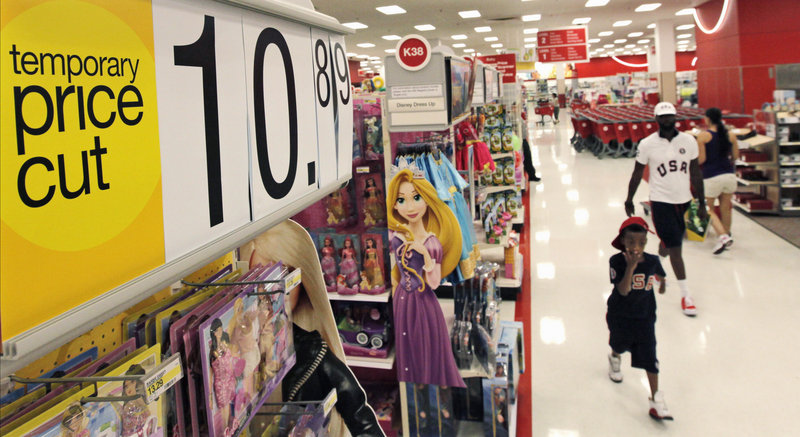NEW YORK – Shoppers, worried about jobs and the overall economy, pulled back on spending in June, resulting in mediocre sales for many retailers.
The results raised concerns about Americans’ ability to spend during the back-to-school season, which is the second-biggest shopping period of the year and starts later this month.
Costco reported a gain below Wall Street expectations, while Target and Macy’s also fell short. However, wealthy shoppers continued to splurge on status goods despite the weakening stock market. That boosted results at Saks and Nordstrom.
“These are disappointing results,” said Ken Perkins, president of RetailMetrics, a research firm. “The consumer is slowing down and becoming increasingly more cautious as the economic backdrop is deteriorating. This doesn’t set up particularly well for back-to-school.”
People spent more earlier in the year, when warmer-than-usual weather and a sunnier outlook for the economy lured shoppers to load up on spring clothing. But consumers have grown more cautious since then.
June, a period when stores clear out summer merchandise to make room for fall goods, is typically the second-biggest shopping month behind December. But that honor now may go to March, because spending was so tepid last month and it took more discounts to get shoppers to buy, said Mike Niemira, chief economist at the International Council of Shopping Centers.
Only a handful of chains representing roughly 13 percent of the U.S. retail industry report monthly sales. Those figures are based on stores open at least a year and are a key measure of retailers’ health because they exclude newly opened and closed stores. Economists watch the numbers because they offer a snapshot of economic activity.
Overall, the council’s tally of sales at 23 chain stores nationwide rose only 0.2 percent, worse than the 1.7 percent increase in May. Excluding drug stores, the index was up 2.6 percent, the low end of the 2.5 to 3.3 percent rise that the mall group had predicted. That was a sharp slowdown from a 4 percent gain in May.
The sales results were lopsided, with discounters and luxury stores faring better than mall-based clothing merchants catering to low to middle-income shoppers.
Costco’s revenue from stores open at least a year rose 3 percent but fell short of Wall Street expectations. Analysts polled by Thomson Reuters expected, on average, a rise of 3.7 percent by the wholesale club operator.
Target’s revenue in stores open at least one year rose 2.1 percent as shoppers spent more on food and health and beauty items. That was slightly lower than the 2.4 percent rise analysts expected.
Macy’s reported a slimmer 1.2 percent gain, below the 1.9 percent increase that analysts had projected.
Ross Stores and The TJX Cos., which operates Marshalls, T.J. Maxx and Home Goods, reported strong performances. Andluxury chains Nordstrom and Saks Inc., which operates Saks Fifth Avenue, fared well, easing fears that the affluent could pull back. Nordstrom notched an 8.1 percent increase, and Saks had a 6 percent gain. Analysts had expected a 4.7 percent increase for both retailers.
Send questions/comments to the editors.



Success. Please wait for the page to reload. If the page does not reload within 5 seconds, please refresh the page.
Enter your email and password to access comments.
Hi, to comment on stories you must . This profile is in addition to your subscription and website login.
Already have a commenting profile? .
Invalid username/password.
Please check your email to confirm and complete your registration.
Only subscribers are eligible to post comments. Please subscribe or login first for digital access. Here’s why.
Use the form below to reset your password. When you've submitted your account email, we will send an email with a reset code.